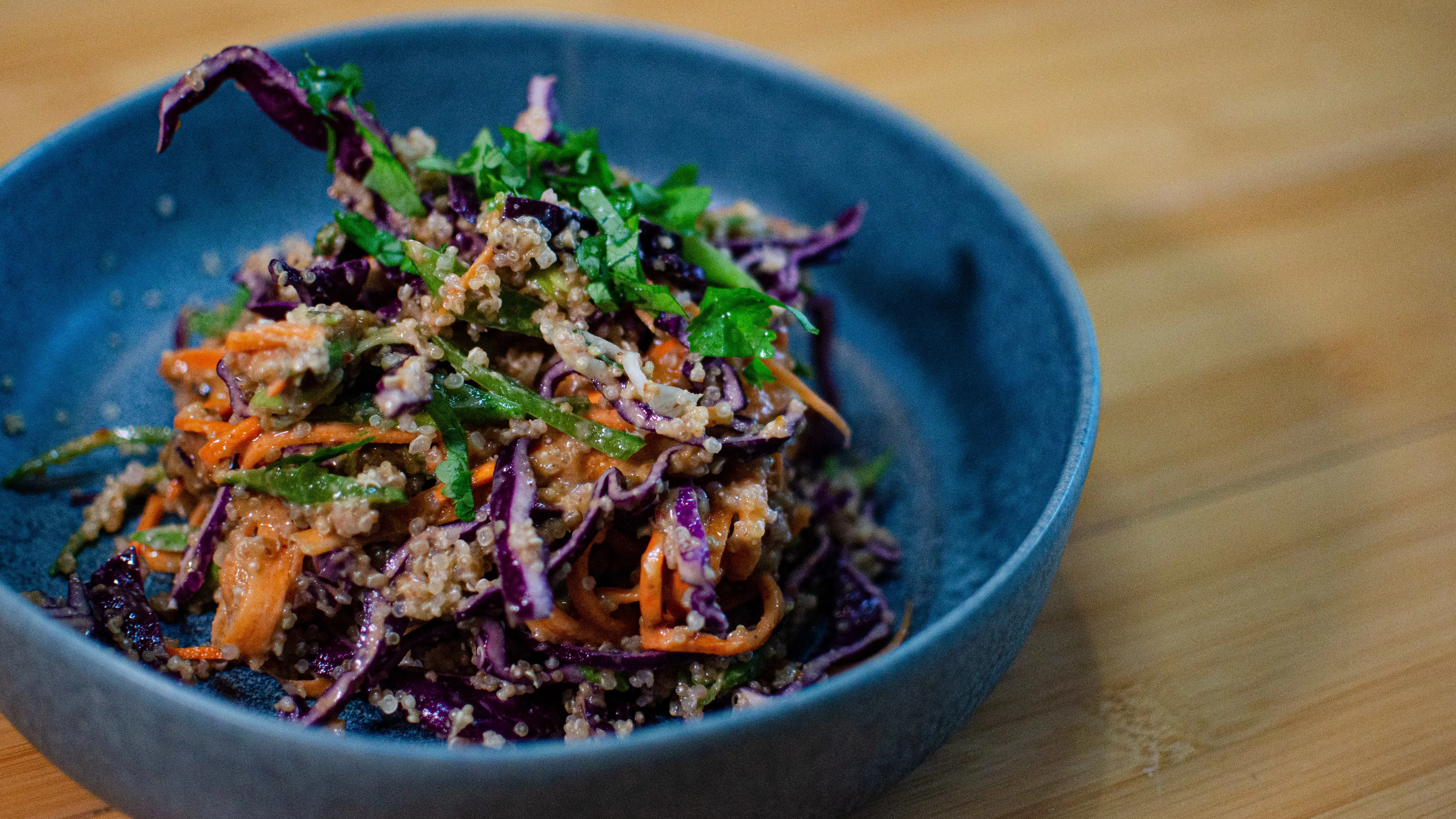I have diabetes – what should I eat?
Simply – a normal healthy diet. Gone are the days of advising those with Diabetes to avoid carbohydrates completely or choose specially formulated ‘diabetic friendly’ foods. Even with Type 1 Diabetes (which typically requires the use of administered insulin) a ‘normal’ healthy balanced diet is still advised.
It’s also best to include carbohydrates with each of your meals as without any carbohydrates blood sugar levels can drop too low. By choosing more wholegrain carbohydrates (such as wholegrain noodles, brown rice, wholegrain pasta) the natural sugars in these foods are released more slowly helping to avoid peaks in blood sugar.
Find out more about what a healthy balanced diet looks like here and if you need some healthy recipe inspiration take a look through our recipe bank here.
What can I drink?
One of the common first symptoms of diabetes is being incredibly thirsty. Although fruit juices and carbonated drinks with added sugars can seem thirst quenching, these are high in simple sugars which are broken down by our body rapidly and increase blood sugar levels very quickly. So instead try to choose sugar free or diet drinks, water, diluted fruit juices or even weak teas and coffees.
Alcohol can still be enjoyed for those with either Type 1 or Type 2 Diabetes but in moderation. Not only does alcohol contain quite a few calories (~180kcal in a typical 1 pint of beer) which when consumed regularly can lead to weight gain, it also interfeers with our bodies ability to manage blood sugar levels increasing the risk of levels dropping too low, called hypoglyceamia. Find out more about alcohol and healthy hydration here.
Do I need to carb count?
Those with Type 1 Diabetes often need to closely manage the total amount of carbohydrates consumed each day as this impacts the amount of insulin that is required. It is not usually necessary to count carbohydrates for those with Type 2 Diabetes if additional medication is not taken.
Whether you are counting carbohydrates or not, the type of carbohydrates is still important. Choose more wholegrain, brown and unpolished carbohydrates as these are broken down more slowly by our bodies so result in a slower increase in blood sugars than white and refined carbohydrates
Should I follow a low carb diet?
Firstly, there isn’t an agreed definition of what a low carbohydrate diet consists of. However most involve reducing carbohydrates to around a maximum of 130g of carbohydrates a day. Carabohydrates can be found in many sources from our diets not just from the well known foods like rice, noodles, pasta and breads but also from fruits, vegetables, pulses and drinks. Take a look at the list below for some examples of carbohydrate content.
Low or lower carbohydrate diets are often quite difficult to stick as they can be quite restrictive and there’s little evidence that shows that they are beneficial to follow long term so these are not typically recommended for diabetics. (SACN, 2021).
Starchy carbohydrate examples (all per portion)
- Rice noodles: about 42g (cooked)
- Wholegrain pasta: about 42g (cooked)
- White rice: about 44g (cooked)
- Brown rice: about 50g (cooked)
- Bulgur wheat: about 26g (cooked)
Fruits, vegetables and pulses examples (all per portion)
- Mango: about 12g (skin and flesh)
- Pear: about 7g (skin and flesh)
- Grapes: about 13g (green, red and white varieties)
- Apple: about 17g (eating apple)
- Banana: about 23g (without skin)
- Orange juice: about 16g (per 150ml glass)
- Cabbage: about 5g (cooked)
- Green peas: about 12g (cooked)
- Lentils: 15g (cooked)






